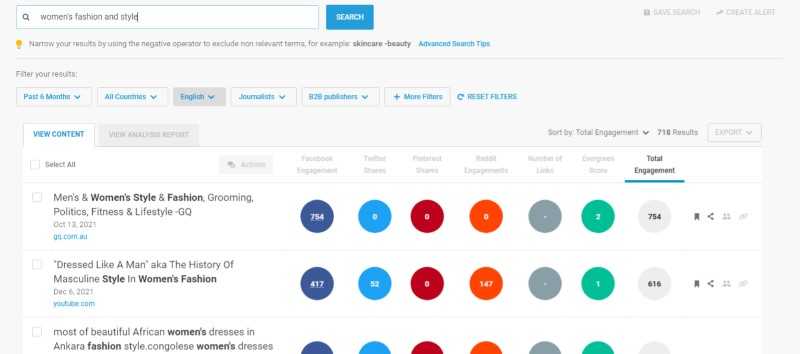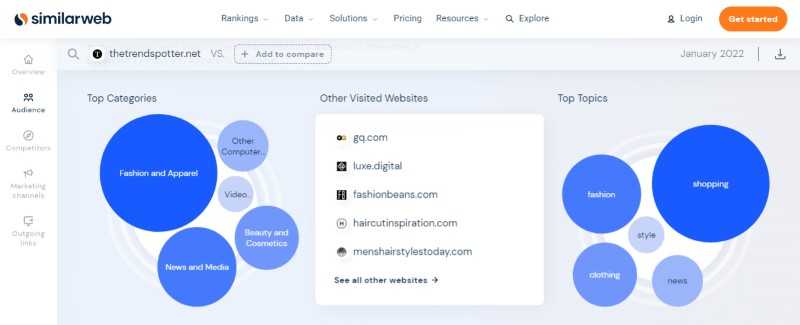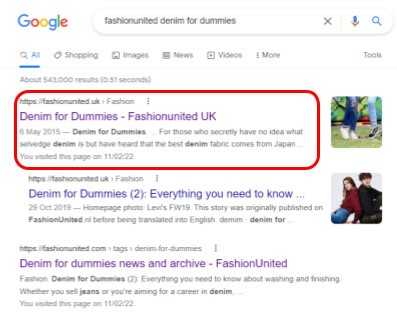
Trying to build authority, rank up on Google, or nail your SEO game? Then this article is for you!
Intro
Backlinks connect one site to another. The number of backlinks on a site tells the search engine how to rank it on a SERP (Search Engine Results Page). To the search engine, backlinks are a sign a website is credible, informative, and relevant to users. As such, keen marketers and businesses have made backlinking an art form.
You might be wondering what this has to do with broken links? Broken links provide a stealthy opportunity to leverage your backlinks to other sites. This isn’t only true for your website or blog; you can use it as part of your social media attack plan too.
In this article, we’ll cover what broken links are, why they’re important, and how you can use them in your SEO and user engagement strategies.
Let’s get started!
What is a broken link?
Ever clicked on a link and seen this?
 (Image source: Created by by storyset
(Image source: Created by by storyset
The domain hosting a page will show an error code when a link is broken. This tells you the server tried to find that URL page, but it was missing or moved. Similar examples of broken links may appear as a:
- 400 bad request: The server cannot find the request.
- 502 bad gateway: There is an issue with the hosting server.
- 204 empty: The page has been found, but there is no content.
- 408 timeout: Did not get a server response in time.
There are also various different types of broken links you may encounter, such as:
- Internal links: Links within your web domain. These do not lead to another website.
- Outbound links: Links from your website that go to another website.
- Inbound links: Links from another website that go to your website.
Key to the SEO strategy we’ll be outlining here is the use of inbound and outbound links. In other words, from your site to another and vice versa.
The All-in-One Platform for Effective SEO
Behind every successful business is a strong SEO campaign. But with countless optimization tools and techniques out there to choose from, it can be hard to know where to start. Well, fear no more, cause I've got just the thing to help. Presenting the Ranktracker all-in-one platform for effective SEO
We have finally opened registration to Ranktracker absolutely free!
Create a free accountOr Sign in using your credentials
Let’s imagine a popular website has a series of links embedded in its content.
The reader attempts to click on this link because they want to read more about the topic. However, when they do, it leads them to a broken link. There are various reasons this might be broken, such as:
- The author removing the content
- The website no longer existing
- The page moving and thus changing the URL
A website’s credibility is damaged by broken links, so they probably want to replace this with similar content. This is where your opportunity lies. By stepping up to fill in for this missing link, you can have that domain linking outbound to your website.
Why do broken links matter?
According to a review of more than 100 Fortune 1000 company websites, a whopping 97% had broken links.
This isn’t surprising. Harvard Law School demonstrated that links depreciate over time. A study of the NYT showed link rot became evident in the space of just four years, and only worsened from there. Six percent of links from 2018 were already broken. This grew to 43% and 70% for 2008 and 1998, respectively.
This can have a negative effect not only on SEO but user engagement. 88% of users won’t return to a site after they’ve had a bad experience. If a website is recording a high bounce rate, it’s most likely because there’s something broken - usually related to its links.
These figures are important to factor into any eCommerce analytics for your website, so you’ll need to consider them when evaluating whether your SEO plan is working. This can also be used to highlight when your own links are broken.
The All-in-One Platform for Effective SEO
Behind every successful business is a strong SEO campaign. But with countless optimization tools and techniques out there to choose from, it can be hard to know where to start. Well, fear no more, cause I've got just the thing to help. Presenting the Ranktracker all-in-one platform for effective SEO
We have finally opened registration to Ranktracker absolutely free!
Create a free accountOr Sign in using your credentials
In terms of SEO, Google uses the quality of links to determine ranking. As per the Google development guidelines for search engine optimization, we see the SERP considers user experience as a deciding factor.
If a user is struggling to enjoy your site because of broken links, this creates a bad page experience. To the search engine, this reads like a poorly performing site, which will thus be ranked lower.
 (Image source: pixabay.com)
(Image source: pixabay.com)
Moreover, overall link authority strongly correlates with a higher search engine results page ranking. A study by Backlinko reviewed more than 11 million SERPs. It found the sites that ranked 1# had 3.8 times more backlinks than sites ranked 2# to 10#.
For these reasons, most websites take backlinking seriously. What many don’t realize, though, is that a broken link isn’t only a missed ranking opportunity. It can affect site traffic, authority, and credibility. All the more reason why offering your content as a replacement is an optimal strategy for linking with other websites.
How do I find broken links?
So, you’re probably thinking “how do I find all these amazing backlinking opportunities?”
Research, research, research...
The first thing you need to understand is what websites to target. Remember, you’re looking for sites where you can insert your content in place of a broken link. You’ll have to ensure your content matches closely with theirs if you want to be successful. The first things to ask are:
- What is your niche?
- Who are your competitors?
- Who might use content like yours?
For instance, let’s say you have a website on women’s fashion.
 (Image source: pexels.com)
(Image source: pexels.com)
You want to reach an audience who’ll be interested in your products and content. You can use free or paid research to find websites similar to yours. It’s then easy to generate market research reports for your team. If you use remote team management, you can send over ideas in a matter of clicks.
Here are some examples of free sites you can try.
Buzz Sumo
 (Image source: BuzzSumo search results)
(Image source: BuzzSumo search results)
Similarweb
 (Image source: Similarweb search results)
(Image source: Similarweb search results)
With only a small amount of research, you can find lots of other websites within your niche. Then, you need to determine if and where their site/page has broken links. You can do this for free on Ahrefs and similar sites.
 (Ahrefs result - fashion blog example)
(Ahrefs result - fashion blog example)
In this example, the website has several broken links. Scrolling down, we can see exactly which ones are missing. For instance, here is a missing link for an article on denim.
 (Ahrefs result - fashion blog example)
(Ahrefs result - fashion blog example)
Now, we want to head over to the site. You need to discover both the context of the link anchor text and the original article if possible. Link anchor on host site
A quick look at the websites’ articles or a Google search will usually help fish out the original.

The All-in-One Platform for Effective SEO
Behind every successful business is a strong SEO campaign. But with countless optimization tools and techniques out there to choose from, it can be hard to know where to start. Well, fear no more, cause I've got just the thing to help. Presenting the Ranktracker all-in-one platform for effective SEO
We have finally opened registration to Ranktracker absolutely free!
Create a free accountOr Sign in using your credentials
Take a look at the keywords, the style, and the content. You should consider the following:
- Is the article similar to your usual content?
- Does it have a similar audience?
- Do you already have relevant content or can you write something similar?
If the answer to these questions is ‘yes’, it’s time to see if you can supplement this link with your content.
Fixing broken links
The next step is approaching that website. There are various communications tools you can use to get the job done, such as social media, calls, or direct messages. However, the most popular form of outreach is generally email.
In other words, you want to write to the site manager/owner and let them know one of their links is broken. Then, make your offer to replace it.
Easy said - but less easy in practice. Popular websites can receive hundreds of email requests for backlinking every day. You need to strategically approach a potential target to get the best results.
Once you have your contact list, there are a few things to do:
- Set goals. Contacting several websites can be an overwhelming task. You want to make sure you’re organized and spending your time productively. It may be worth creating a spreadsheet or planner to arrange your contacts and list any important details about them.
- Learn about the target. You want to stand out from the crowd. Your message should be personalized and personable. Show them you know who they are and what they’re about. Be friendly but not overly sales pitchy. Otherwise, you might scare them off.
- Find their email. Getting to the right person is important. If the site doesn't list their email, you may need to dig around. You can use sites such as Hunter.io to extract emails from a website.
- Don’t waffle. Be precise and clear about the purpose of contacting them. They don’t need an essay on the benefits of your content. Get all the important details in the first few lines. Provide an intro and key details and leave it there.
So what have we learned?
Prospecting through broken links is an easy way to give your SEO a boost. It might take a bit of work, but it will help you build site authority and develop a more targeted content strategy. It will also introduce you to useful contacts and give you several new channels through which to meet your audience.
Remember:
- Websites don’t benefit from having broken links on their pages.
- The majority of websites will have a broken link somewhere.
- Broken links are a great way to get in with popular domains.
- Broken links can provide you with ideas for your content.
Moreover, broken link building is easy and free! Why not give it a try today?
About Author
Grace Lau is the Director of Growth Content at Dialpad, an AI-powered cloud communication platform for better and easier team collaboration. She has over 10 years of experience in content writing and strategy. Currently, she is responsible for leading branded and editorial content strategies, partnering with SEO and Ops teams to build and nurture content. Grace Lau also published articles for domains such as Codemsotion and divvyhq. Here is her LinkedIn.


